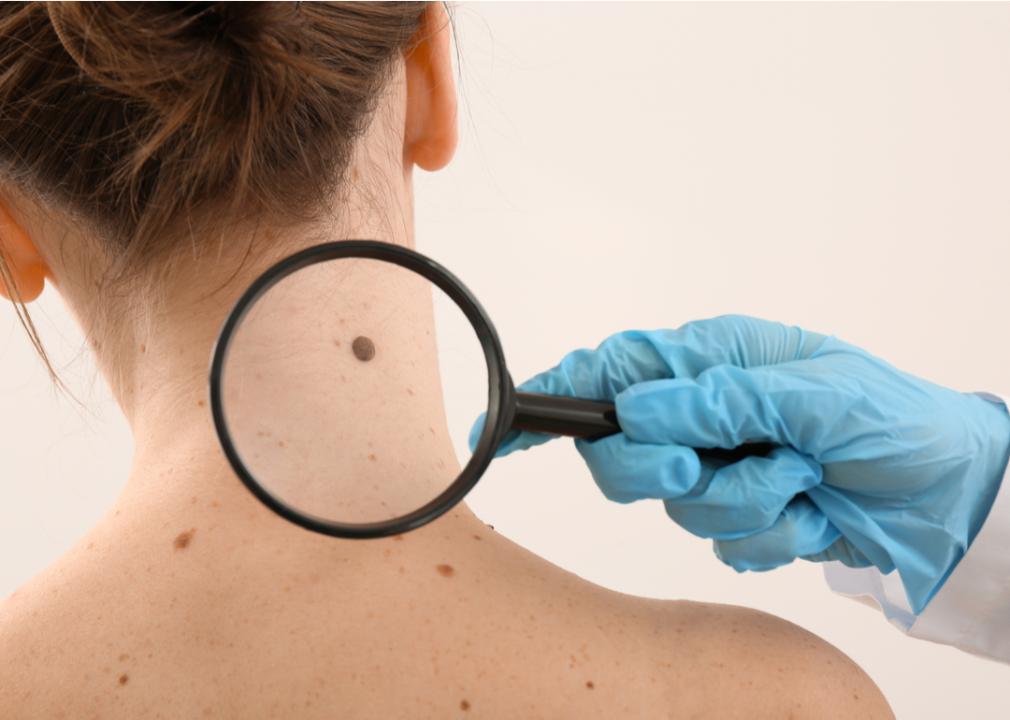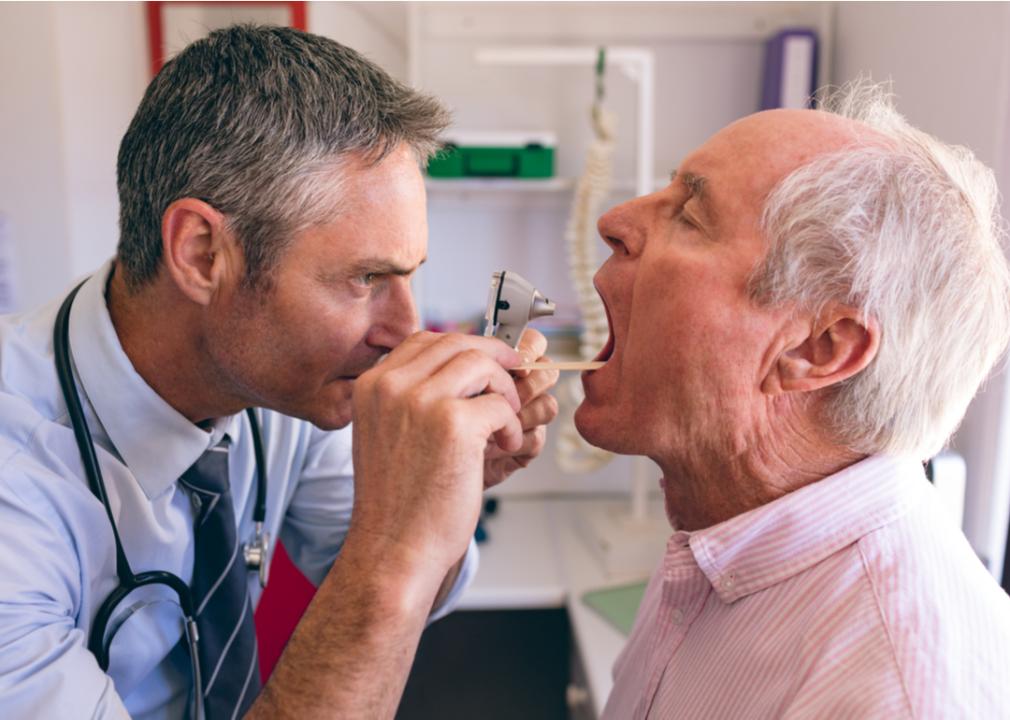Types of cancer on the rise

goodbishop // Shutterstock
Types of cancer on the rise
Cancer rates are rising worldwide and as the number of diagnosed cases continues stacking up year after year, it is predicted that cancer will surpass heart disease as the leading cause of death in America.
Cancer affects every one of us, whether it is ourselves, a family member, or a close friend. It is impossible to avoid its ubiquity. While many types of cancer are genetic, the risk of some can be decreased through a healthy diet, sufficient sleep, and even wearing sunscreen during prolonged hours under the sun at the beach. And though the prognosis for many is often tragic, early detection and regular medical checks are not only the smart thing to do—they can save lives.
Using data from the Centers for Disease Control and Prevention, Stacker averaged the annual number of new cancer cases per 100,000 people in 2000 and in 2018 (the most recent year for comprehensive data) to determine the increasing trend of certain types of the disease. From there, Stacker compiled a list of nine cancers that have had the greatest jump in frequency within that 18-year period.
Read on to learn which forms of cancer are increasing.
You may also like: Most prevalent chronic conditions in American seniors
![]()

Canva
#10. Corpus and uterus cancer
– New cases in 2000: 23.7 per 100,000 people
– New cases in 2018: 27.4 per 100,000 people
– Increase in new case rates from 2000 to 2018: 15.6%
Also known as endometrial cancer, corpus and uterus cancer is typically diagnosed after the symptom of abnormal vaginal bleeding, which occurs in 90% of patients. This cancer typically affects people who are postmenopausal, although 5% of cases occur in people under the age of 40.

David Tadevosian// Shutterstock
#9. Pancreatic cancer
– New cases in 2000: 11.1 per 100,000 people
– New cases in 2018: 13.1 per 100,000 people
– Increase in new case rates from 2000 to 2018: 18%
The pancreas is an organ behind the stomach that releases hormones that help process sugar. Unfortunately, symptoms of pancreatic cancer rarely present themselves until the disease reaches a more advanced stage, by which time a cure is unlikely. Steve Jobs and Patrick Swayze both died from this cancer.

T-Photo // Shutterstock
#8. Acute lymphocytic leukemia
– New cases in 2000: 1.5 per 100,000 people
– New cases in 2018: 1.8 per 100,000 people
– Increase in new case rates from 2000 to 2018: 20%
Acute lymphocytic leukemia, a type of blood cancer found mostly in children, occurs when abnormal white blood cells develop in the bone marrow. ALL gets into the bloodstream and, similar to other forms of cancer, can spread to other organs such as the liver and spleen. ALL has seen an increase in cases in the U.S., both in children and adults, with death likely to occur in adults. Typical treatment for ALL in adults tends to be long-term chemotherapy, and in children, chemotherapy is given in three phases.

kan_chana // Shutterstock
#7. Kidney and renal pelvis cancer
– New cases in 2000: 12.7 per 100,000 people
– New cases in 2018: 16.9 per 100,000 people
– Increase in new case rates from 2000 to 2018: 33.1%
The renal pelvis is the part of the kidney that connects to tubes, called ureters, which carry urine to the bladder. Typical symptoms of this disease are blood in the urine and constant back pain on one side. Surgery is a common form of treatment, including the removal of the entire kidney.

Pixel-Shot Shutterstock
#6. Skin cancer (excluding basal and squamous)
– New cases in 2000: 17.6 per 100,000 people
– New cases in 2018: 23.7 per 100,000 people
– Increase in new case rates from 2000 to 2018: 34.7%
According to the American Academy of Dermatology, skin cancer is the most prevalent form of cancer in the U.S. with predictions that 1 in 5 Americans will have the condition by age 70. Having multiple sunburns increases the risks of melanoma, a serious form of skin cancer. It’s predicted that melanoma deaths will increase to 6.5% in 2022. Some standard treatments for skin cancer include chemotherapy, immunotherapy (the use of medication to stimulate someone’s immune system to combat cancer cells) and other drug treatments.
You may also like: Social isolation and mental health: tips from experts on staying healthy

wavebreakmedia // Shutterstock
#5. Tongue cancer
– New cases in 2000: 2.7 per 100,000 people
– New cases in 2018: 3.7 per 100,000 people
– Increase in new case rates from 2000 to 2018: 37%
There are different types of cancers that grow on the tongue. Tongue cancer is more common in older age groups and in men. Risk factors for tongue cancer include smoking, alcohol intake, and having the sexually transmitted disease HPV. Some symptoms of oral tongue cancer include a lump that resembles an ulcer. For base of tongue cancer, there’s minimal symptoms in the beginning stages but as the illness progresses, there’s difficulty swallowing and a sense of fullness in the throat.

Shidlovski // Shutterstock
#4. Liver and intrahepatic bile duct cancer
– New cases in 2000: 5.1 per 100,000 people
– New cases in 2018: 8.3 per 100,000 people
– Increase in new case rates from 2000 to 2018: 62.7%
Bile is produced in the liver. It then runs through a duct system and empties into the intestine. Cancer cells can develop from both the liver and duct cells. Symptoms of this disease include jaundice, itchy skin, and weight loss. This form of cancer typically affects people over the age of 50.

Motortion Films // Shutterstock
#3. Tonsil cancer
– New cases in 2000: 1.4 per 100,000 people
– New cases in 2018: 2.3 per 100,000 people
– Increase in new case rates from 2000 to 2018: 64.3%
Men are three times more likely than women to be diagnosed with tonsil cancer. Symptoms usually involve a constant sore throat, mouth pain, and difficulty chewing and/or swallowing. Tonsil cancer is usually diagnosed through blood tests and x-rays to examine if the tumor has spread to other areas of the body such as the lung. Treatment options for tonsil cancer include surgery, radiation therapy, and chemotherapy.

Canva
#2. Thyroid cancer
– New cases in 2000: 7.4 per 100,000 people
– New cases in 2018: 13.2 per 100,000 people
– Increase in new case rates from 2000 to 2018: 78.4%
The thyroid is a gland in the neck that produces hormones that control your heart rate, blood pressure, body temperature, and weight. When diagnosed early, thyroid cancer is one of the most treatable types of cancer. Although doctors do not know what causes thyroid cancer, it is more prevalent in women and those with radiation exposure.

Andrey_Popov // Shutterstock
#1. Oropharyngeal cancer
– New cases in 2000: 0.4 per 100,000 people
– New cases in 2018: 0.8 per 100,000 people
– Increase in new case rates from 2000 to 2018: 100%
Oropharyngeal cancer is when malignant cancer cells are detected in the oropharynx, the middle part of the throat. The oropharynx plays a huge role in where air, food, and fluids pass through. Oropharynx cancer has been on the rise for years with 10,850 deaths in the U.S. in 2021. Treatment options include chemotherapy and radiation therapy.
You may also like: Best states for health care





